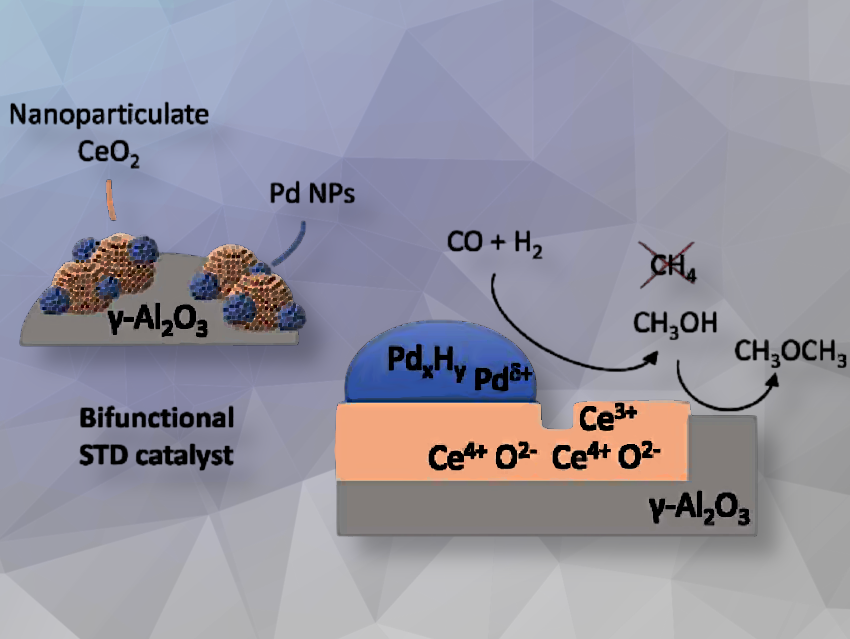The single-step syngas-to-dimethyl ether (STD) process presents both economic and technical advantages over the current two-step industrial process, which uses Cu/ZnO/Al₂O₃ catalysts. By directly converting syngas (CO/H₂) into dimethyl ether (DME), the STD process simplifies the traditional two-step method. There is an increasing demand for DME as an alternative fuel and as a precursor for hydrocarbons and hydrogen production.
Yitzhak Apeloig and colleagues, Technion, Haifa, Israel, have synthesized a highly active bifunctional Pd/CeO₂/γ-Al₂O₃ catalyst. In this system, Pd colloids dispersed in a nanoscale CeO₂ matrix act as the key building block for the methanol-active component, efficiently catalysing the STD reaction. The Pd/CeO₂/γ-Al₂O₃ catalyst with a high Pd-CeO₂ interface concentration, significantly increases CO conversion and dimethyl ether yield compared to reference catalysts of Pd supported on Al₂O₃.
Through systematic investigations using spectroscopic and microscopic techniques, the team observed the formation of highly dispersed palladium clusters/particles confined within the nanoparticulate CeO₂ matrix. The enhanced catalytic performance, in terms of both activity and stability, is attributed to the presence of cationic palladium interfacial species and adjacent oxygen vacancies.
In general, grafting highly defective CeOx islands onto high surface area supports is a promising strategy, not only for stabilizing and trapping active noble metal species but also for generating highly active bifunctional catalysts. The team foresees that the co-decomposition of metal precursors to form metal particles isolated within a nanoparticulate matrix is an effective approach for producing such bifunctional catalysts for other important reactions.
- Single-Step Synthesis of Dimethyl Ether from Syngas over Nanoparticle-Derived Bifunctional Pd/CeO₂/Al₂O₃ Catalysts,
Bing Wang, Zairan Yu, Shuang Chen, Nicola Da Roit, Dieter Schild, Michael Zimmermann, Yuemin Wang, Silke Behrens,
Angew. Chem. Int. Ed. 2025.
https://doi.org/10.1002/anie.202423273



